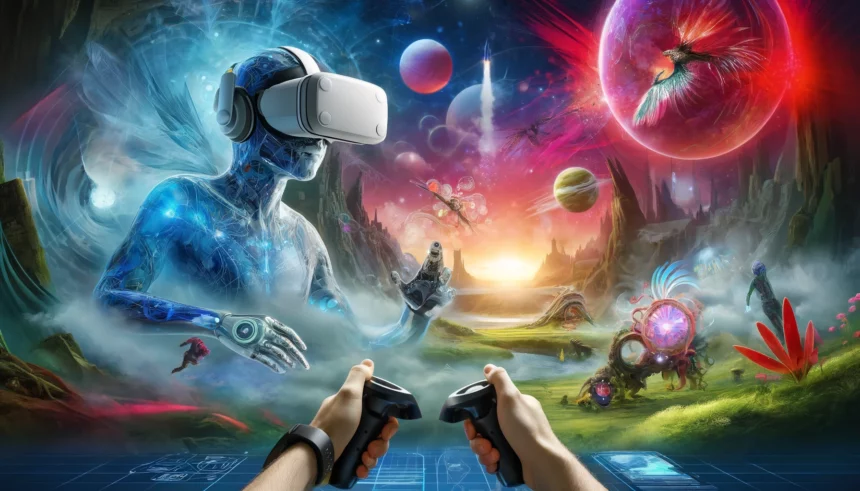The Rise of Virtual Reality in Gaming
Virtual Reality (VR) has transformed how we experience video games, transporting players into vibrant, interactive worlds. With advancements in technology, VR gaming is poised for even greater innovations, making games more immersive and realistic.
Innovations Enhancing VR Gaming
Enhanced Haptic Feedback
The next big leap in VR gaming is improving haptic feedback, which aims to simulate real touch sensations. Imagine wearing gloves that let you feel the texture of virtual objects or the impact of virtual rain. Companies like HaptX are working on such technologies, pushing VR experiences closer to reality.
Eye-Tracking for Better Interaction
Eye-tracking technology is another frontier in VR gaming. It allows the game to see where you’re looking and adjust what you see accordingly, making for a more natural and engaging experience. This means you could aim or interact in a game just by looking at objects, enhancing both the gameplay and graphical fidelity.
Going Wireless
The shift to wireless VR headsets like the Oculus Quest 2 has started to free players from cables, allowing more freedom to move. Future VR headsets will likely be wireless by default, removing physical constraints and enhancing the feeling of being in another world.
Smarter Game Worlds with AI
Artificial Intelligence (AI) and procedural generation are set to make VR worlds smarter and more dynamic. AI can make non-player characters (NPCs) react more realistically, while procedural generation can create endless, evolving landscapes. This means VR games could offer new scenarios and challenges every time you play.
VR Gaming in India: An Emerging Hub
India is quickly becoming a key player in the VR gaming scene, thanks to a growing number of young tech enthusiasts and rising incomes. Indian companies like Gamitronics and XR Labs are leading the charge, developing VR games that incorporate local cultures and stories.
Support from Government and Industry
The Indian government and organizations like NASSCOM are supporting the VR industry, providing a boost through initiatives like Digital India. This support is vital for fostering innovation and making India a significant player in global VR gaming.
Overcoming Challenges
Despite the excitement, VR gaming faces hurdles like high costs and the need for better internet infrastructure. However, as technology progresses and becomes cheaper, more people will likely be able to afford and enjoy VR. Additionally, improvements in internet services, including the rollout of 5G, will help deliver smoother, more connected VR experiences.
The Broad Horizons of VR Gaming
Beyond just entertainment, VR has the potential to transform education, tourism, and social interactions. It offers new ways to learn, explore virtual places, or meet people without leaving your home. The future of VR in gaming and beyond is not just about playing games but experiencing new realities.
Internal Links:
External Links:
The future of VR gaming looks bright, with technology continuing to blur the lines between the real and the virtual. As VR becomes more immersive and accessible, it is set to change not just gaming but how we interact with all digital content.
















